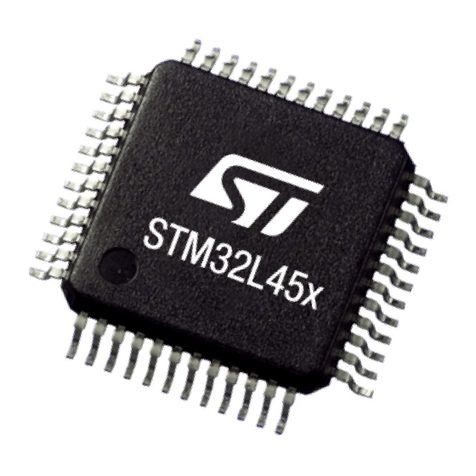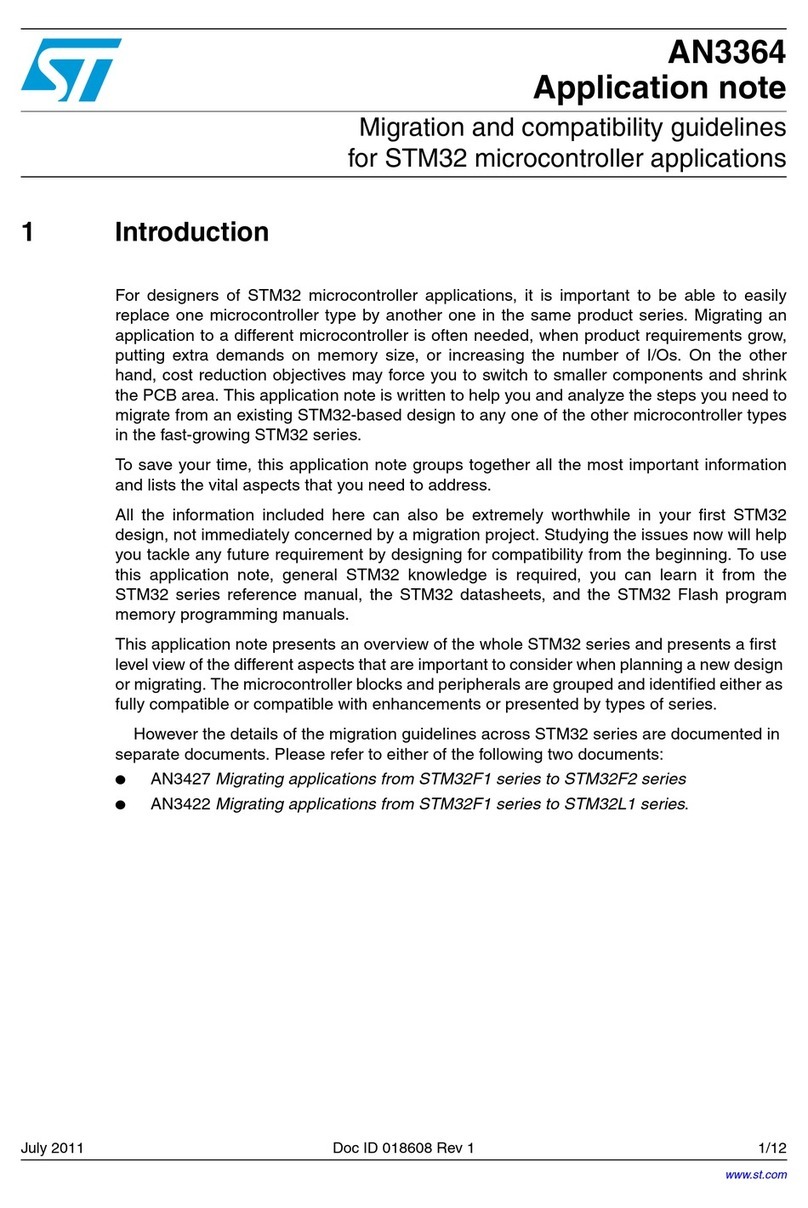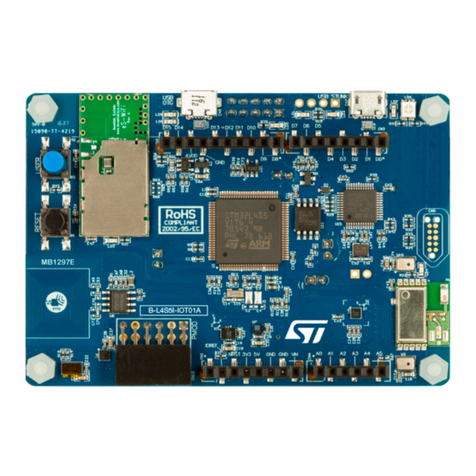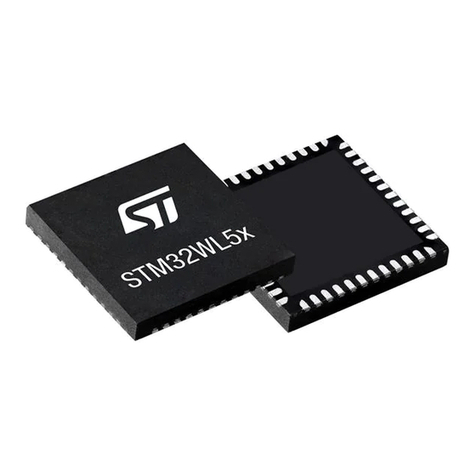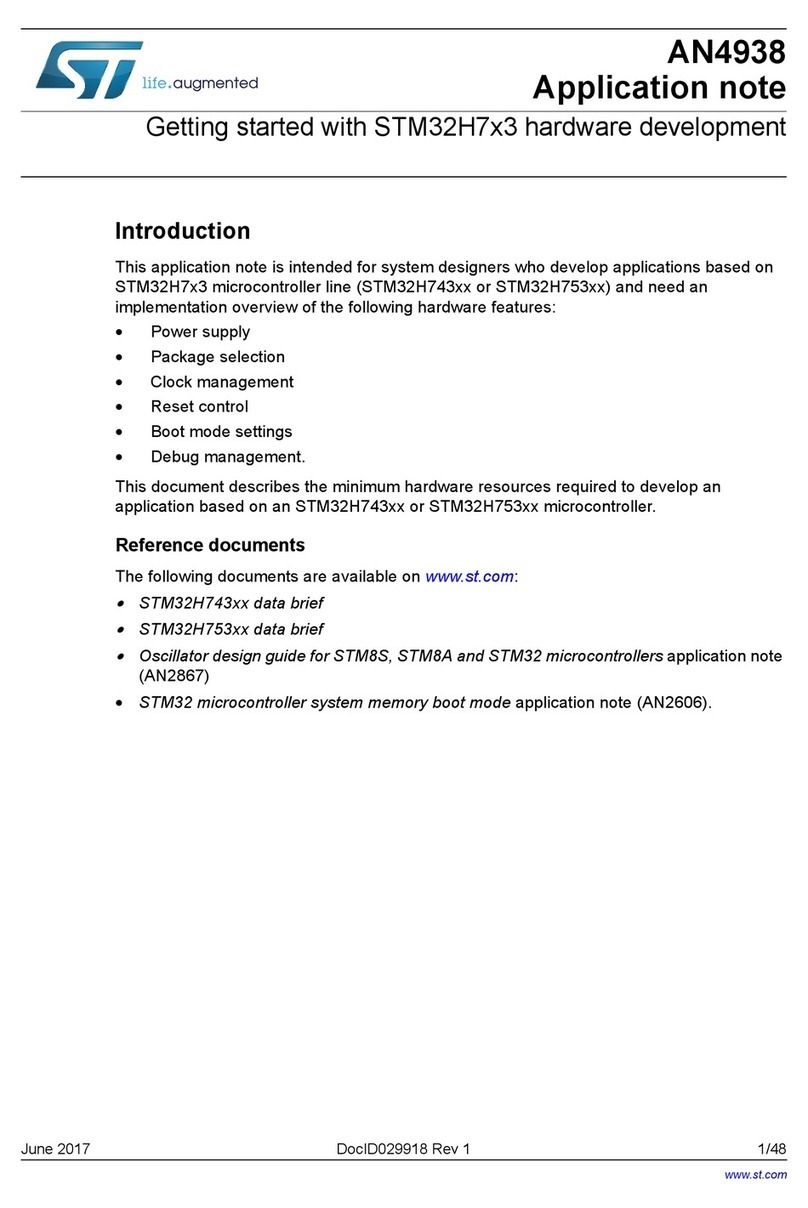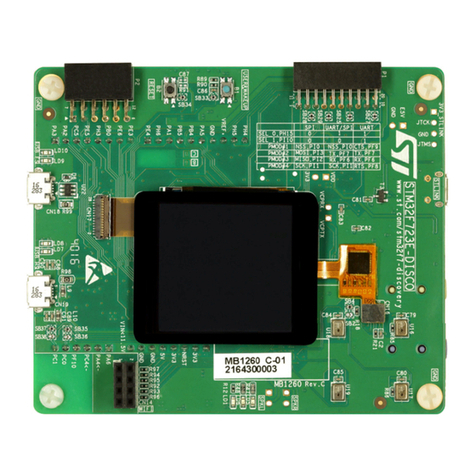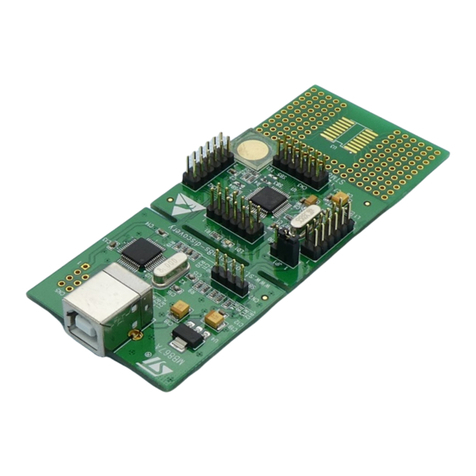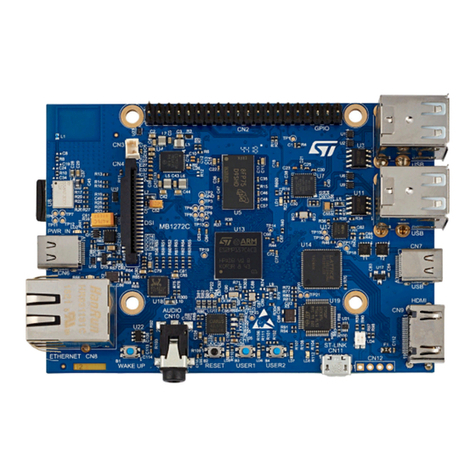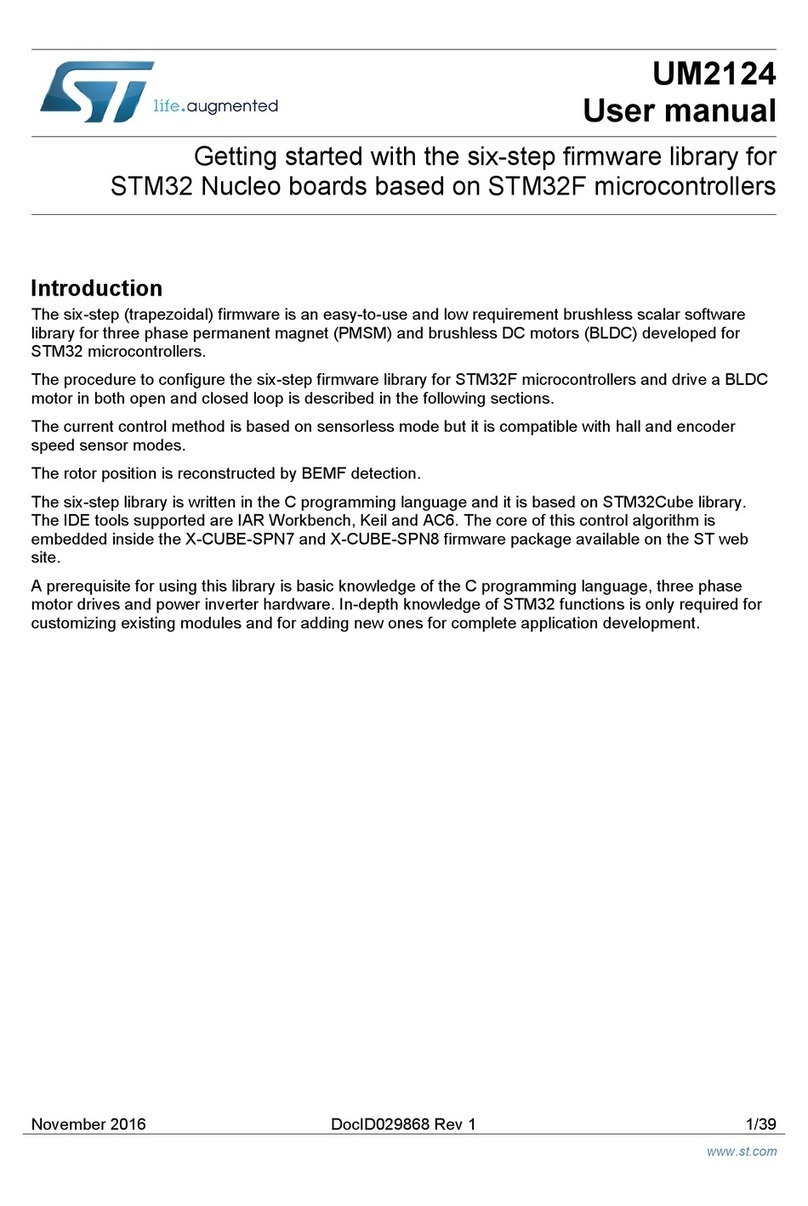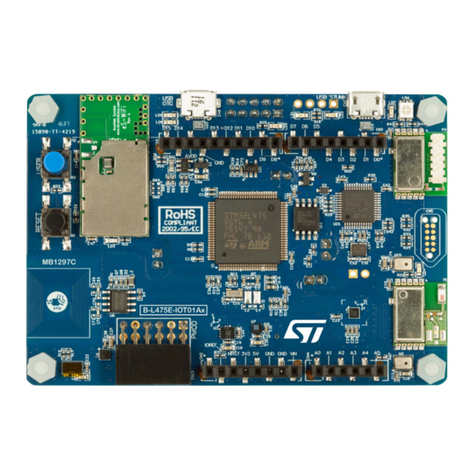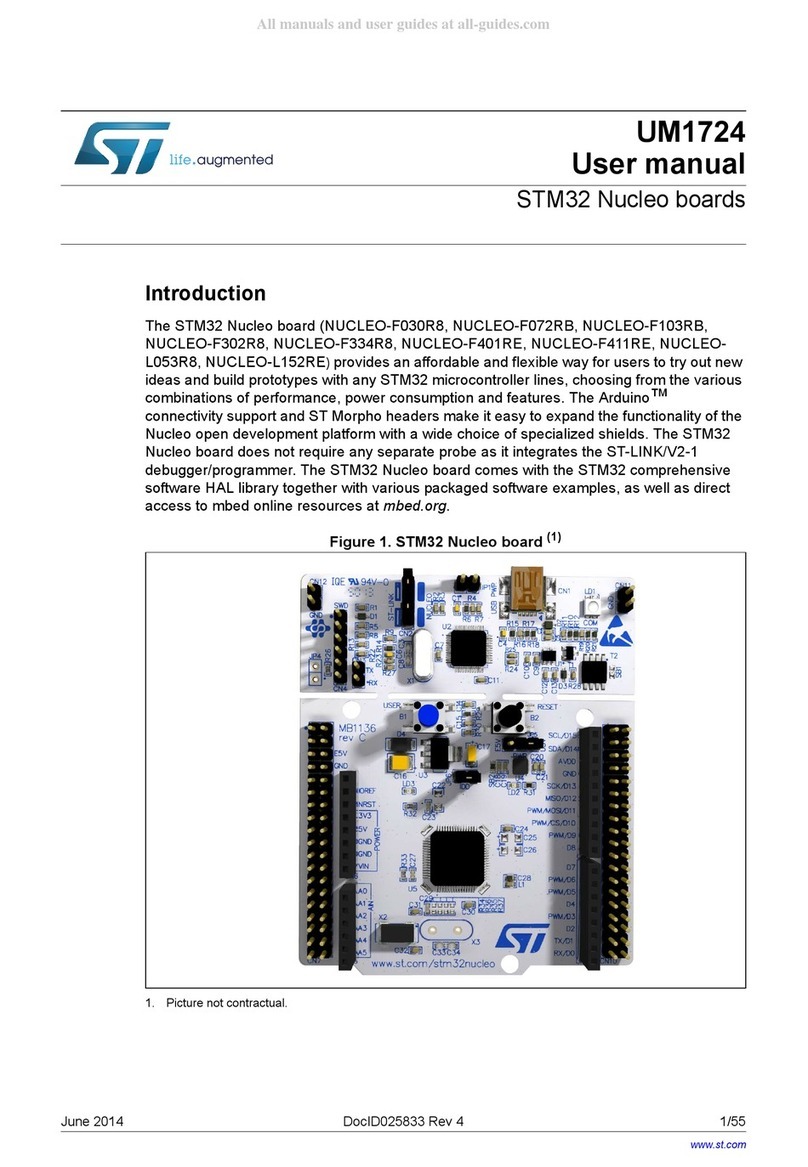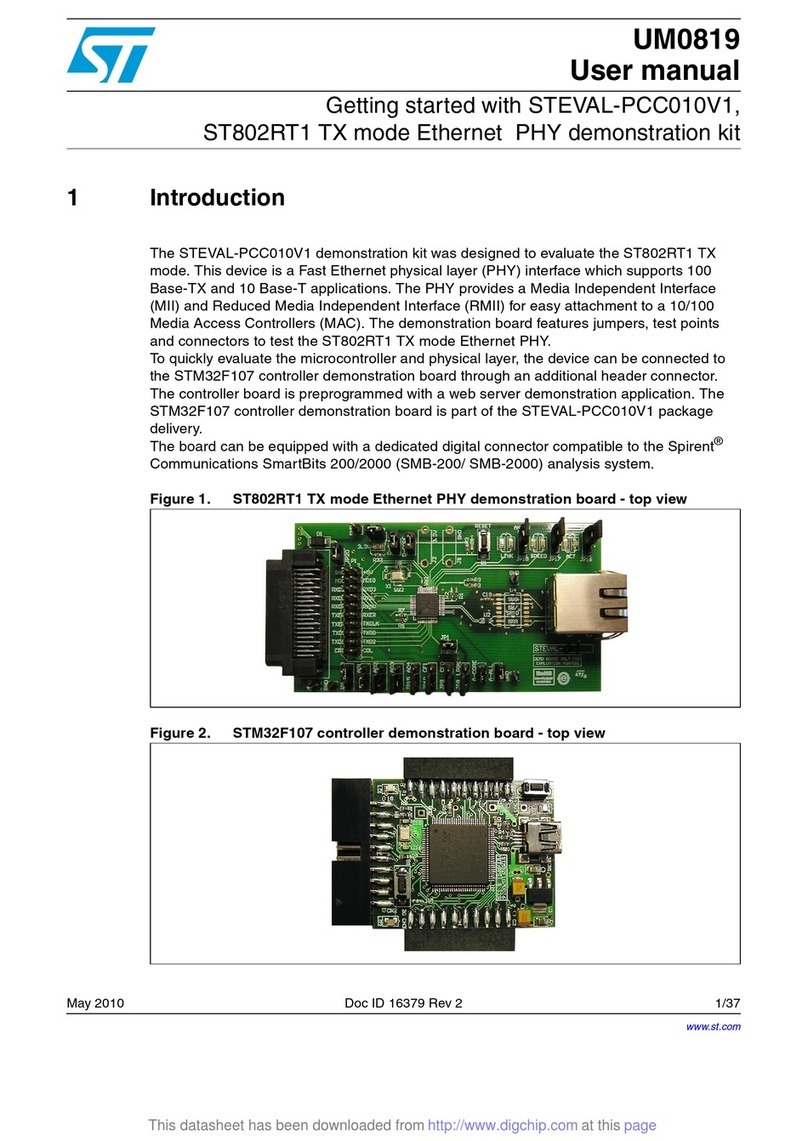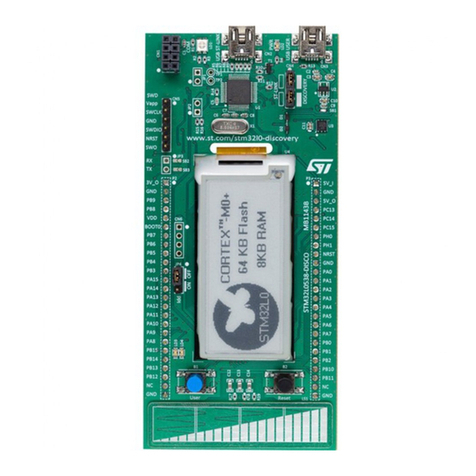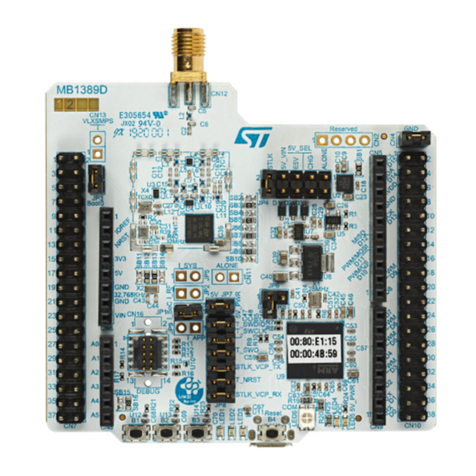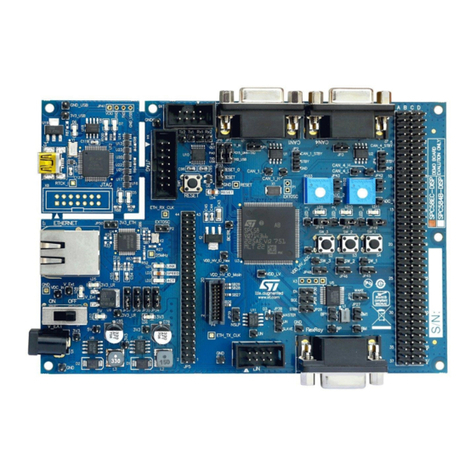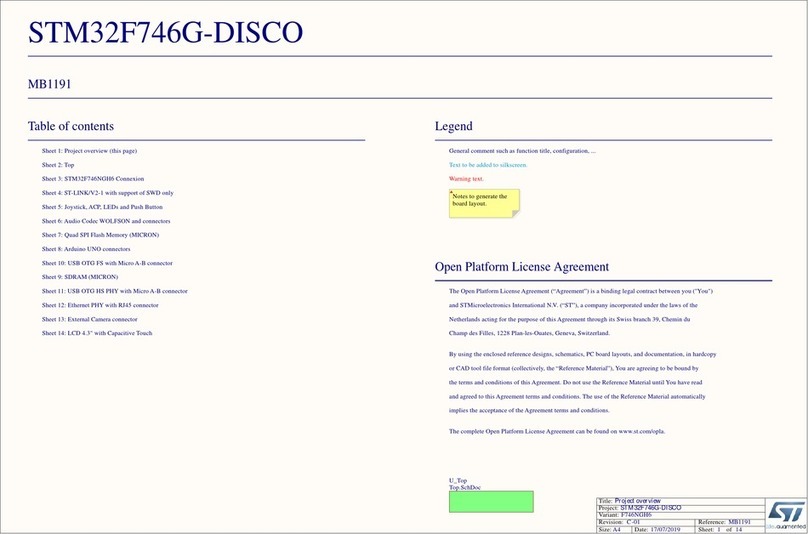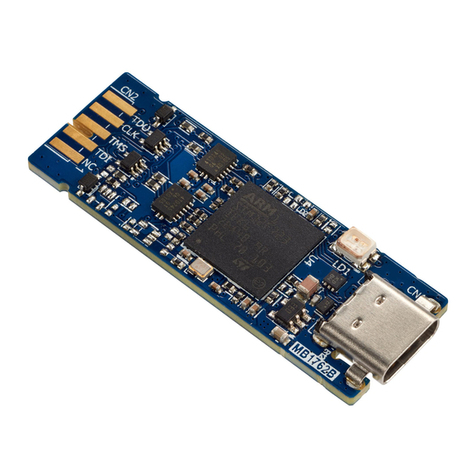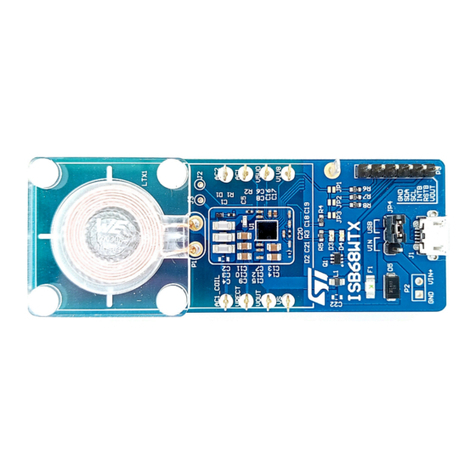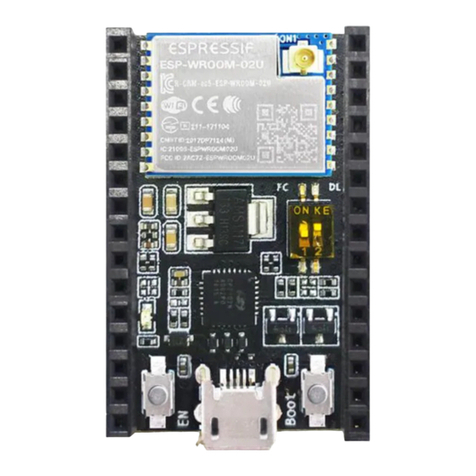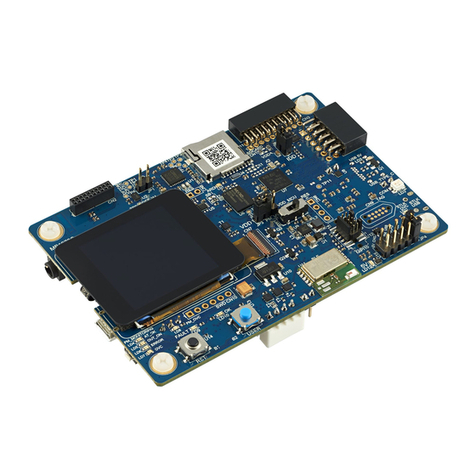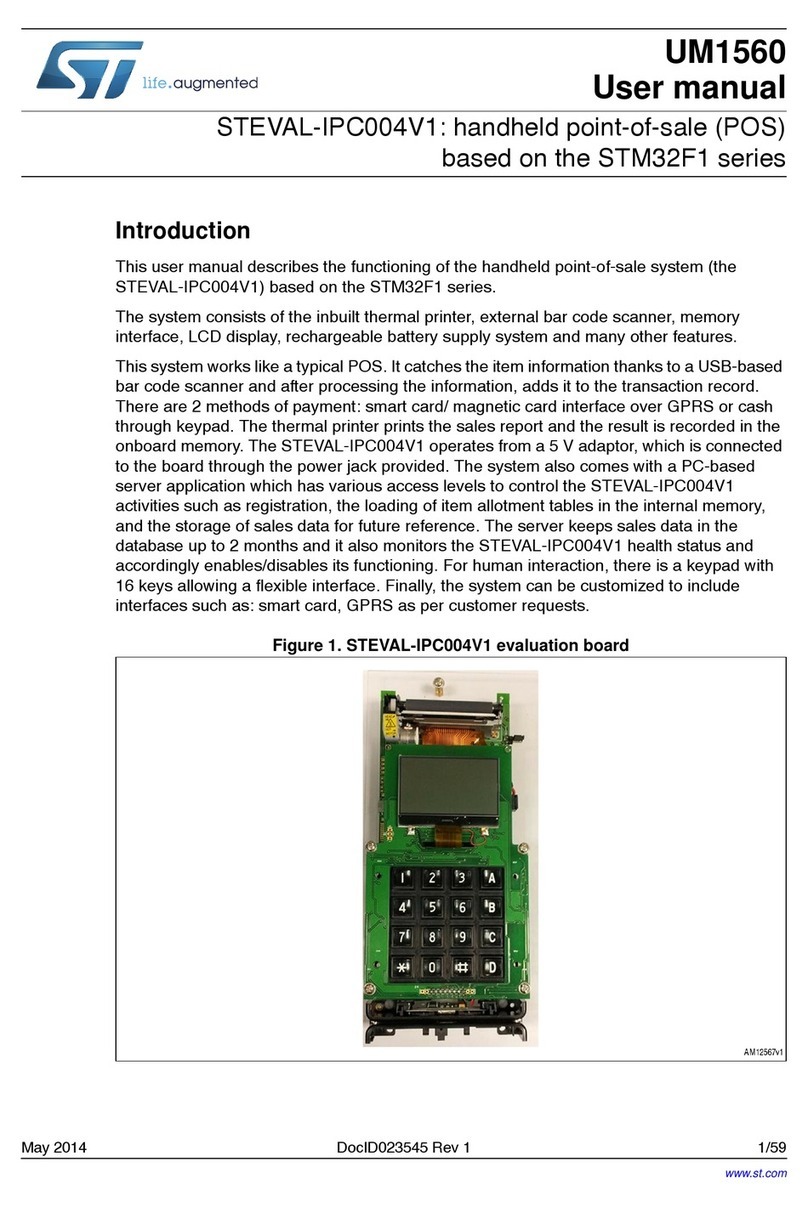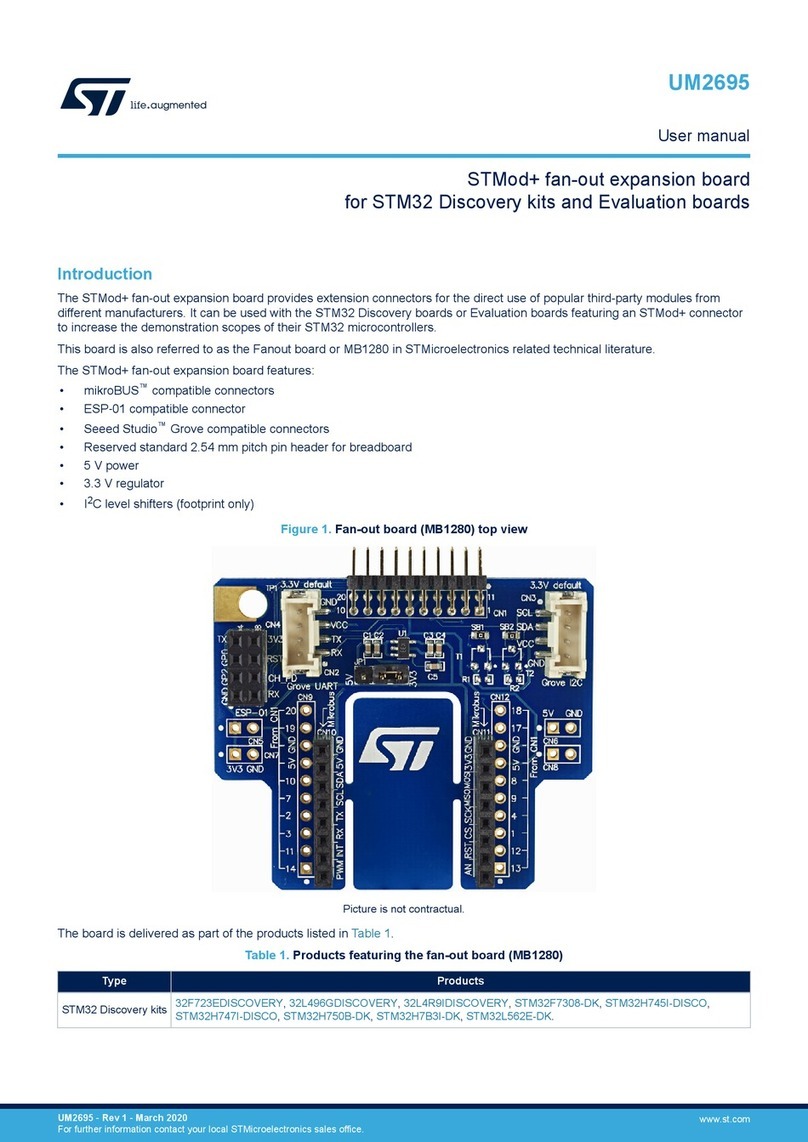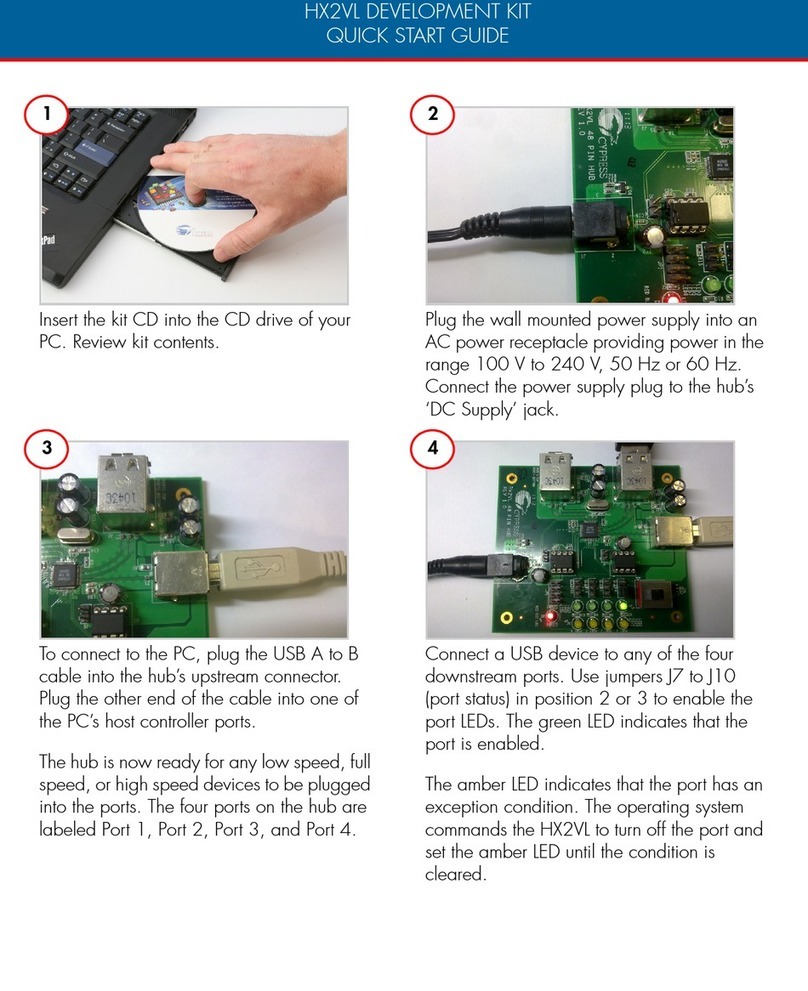
L6386E AN994
10/25
3 L6386E
The L6386E (shown in Figure 7) is a configurable driver based on the structure of the
L6385E, with added functions. This device is available in DIP14 or SO-14 packages.
The added shutdown function (active low) and the current sense comparator (0.5-V
threshold) with diagnostic output, make this device particularly suitable for motion control
applications with cycle-by-cycle current feedback. The DIAG and CIN pins can be used to
stop the device (by acting on the SD pin). Figure 8 and Figure 9 show the schematic
diagram of the evaluation circuit and the layout of the relevant PCB.
Table 3. L6386E pin description
N. Name Type Function
1 LIN
(1) I Lower driver logic input. Compatible with the VCC voltage (Vil Max = 1.5 V, Vih Min = 3.6 V).
2 SD
(1) I Shut-down logic input. Compatible with the VCC voltage. If it needs to be pulled up, the
suggested resistor value is 5 to 10 kΩ. (Vil Max = 1.5 V, Vih Min = 3.6 V).
3 HIN
(1) I Low-side driver logic input. Compatible with the VCC voltage.
4 VCC Supply input voltage with UVLO (typically Vccth1 = 12 V, Vccth2 = 10 V).
5 DIAG O Diagnostic output: open drain.
6 CIN I Comparator input.
7 SGND Ground reference for logic signals.
8 PGND Power ground reference for the low voltage gate driver.
9 LVG O
Low-side driver output. The output stage can deliver a 400 mA source and a 650 mA sink
(typical values). The circuit guarantees 0.3 V maximum on the pin (at Isink = 10 mA) with
VCC > 3 V and lower than the turn-on threshold. This removes the need for the bleeder
resistor connected between the gate and the source of the external MOSFET normally
used to hold the pin low. The gate driver ensures low impedance in SD conditions as well.
10, 11 N.C. Not connected.
12 OUT O
High-side floating driver. Attention should be paid to the layout design of the power stage
so as to limit below-ground spikes on this pin.
13 HVG O
High-side driver output. The output stage can deliver a 400 mA source and a 650 mA sink
(typical values). The circuit guarantees 0.3 V maximum between this pin and Vout (at
Isink = 10 mA) with VCC > 3 V and lower than the turn-on threshold. This removes the need
for the bleeder resistor connected between the gate and the source of the external
MOSFET normally used to hold the pin low. The gate driver ensures low impedance in SD
conditions as well.
14 VBOOT
Bootstrapped supply voltage. This is the floating supply of the high-side driver. Includes a
UVLO function (typically, VBth1 = 11.9V, VBth2 = 9.9 V). The bootstrap capacitor connected
between this pin and pin 12 can be fed by an internal structure named "bootstrap driver" (a
patented structure). This structure can replace the external bootstrap diode.
1. The pull-down internal resistor is typically some hundred kΩs.
